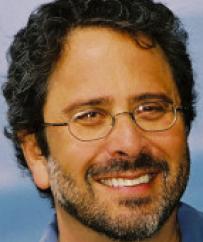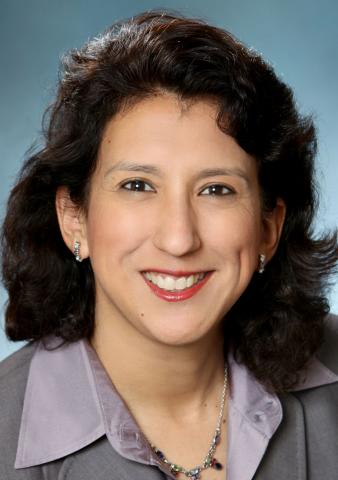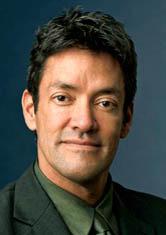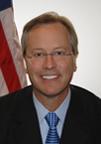While some cities deal with stalled projects due to a listless economy, the Westside cities of Los Angeles County are knee-deep in public and private developments. The following excerpts—focused on redevelopment, parking, and relations with Sacramento—are from a September 16th panel hosted by the Westside Urban Forum at the Beverly Hills Country Club. Cecilia Estolano of ELP Advisors led the discussion with Mayor John Duran, City of West Hollywood (WH), Mayor Richard Bloom, City of Santa Monica (SM), Mayor Micheál O’Leary, Culver City (CC), Vice Mayor William Warren Brien, City of Beverly Hills (BH).

Richard Bloom
"To take money away from these poor cities in order to make the state work is simply an unsustainable and unworkable solution..." -Mayor Richard Bloom, City of Santa Monica
 Cecilia Estolano: In the face of one of the worst budget deficits in the state’s history, it seems we simply can’t afford a valued tool: redevelopment. West Hollywood, Culver City, and Santa Monica have each used redevelopment exceptionally well. So what happens when the governor comes in and says, “we’re going to sweep the money, and we’re going to eliminate redevelopment”? Sure there’s a lawsuit, and, yes, we’re all waiting for what the California Supreme Court’s going to say. So what now, John? What’s West Hollywood going to do now without redevelopment?
Cecilia Estolano: In the face of one of the worst budget deficits in the state’s history, it seems we simply can’t afford a valued tool: redevelopment. West Hollywood, Culver City, and Santa Monica have each used redevelopment exceptionally well. So what happens when the governor comes in and says, “we’re going to sweep the money, and we’re going to eliminate redevelopment”? Sure there’s a lawsuit, and, yes, we’re all waiting for what the California Supreme Court’s going to say. So what now, John? What’s West Hollywood going to do now without redevelopment?
 Mayor Duran (WH): Well, hopefully we win the lawsuit. To me one of the downsides of term limits in Sacramento is that we don’t have a lot of people thinking long-term, and we have all these new Assembly Members who are up there and who have never had experience in local government. John Pérez, the Speaker of the Assembly, is a friend of mine (I’ll say that before I dish him). Let’s say a local government has a problem. So what happens? “I want to take over government and disincorporate it.” Whoa, John, stop! That’s very threatening to people who are in cities, when the state of California comes down and tries to decide what to do with local government. It should be the other way around. We have success stories. We’re not broke. West Hollywood’s not letting people off; we’re not cutting services. You’re broke, and now you’re taking our money when we’re actually being productive.
Mayor Duran (WH): Well, hopefully we win the lawsuit. To me one of the downsides of term limits in Sacramento is that we don’t have a lot of people thinking long-term, and we have all these new Assembly Members who are up there and who have never had experience in local government. John Pérez, the Speaker of the Assembly, is a friend of mine (I’ll say that before I dish him). Let’s say a local government has a problem. So what happens? “I want to take over government and disincorporate it.” Whoa, John, stop! That’s very threatening to people who are in cities, when the state of California comes down and tries to decide what to do with local government. It should be the other way around. We have success stories. We’re not broke. West Hollywood’s not letting people off; we’re not cutting services. You’re broke, and now you’re taking our money when we’re actually being productive.
I think what they fail to realize is that redevelopment is a tool. Of course there’s some calculated risk: financial risk and political risk. You’re never popular. When you’re doing redevelopment you’re using inverse condemnation. We’re taking away people’s real estate; we’re building new things; we’re creating new transit hubs; we’re redesigning a whole part of the city, and people don’t like change. Today they’re fine. Today they think that the corner of Santa Monica and La Brea is the best thing to happen on the East Side, right? But in the process they were screaming and yelling. There is political risk that we take to do redevelopment. Yes, there are some cities that have either abused it or have failed, but not all do. But the Sacramento blanket approach really stifles creativity.
Estolano: You say many Assembly Members don’t have local government experience. But, they do in fact have local government experience, and I might add that the Speaker, John Pérez, used to sit on the board at the CRA-LA. Something happens when you move from a city to Sacramento, and, Mayor Bloom, what if you became a legislator? Let’s just assume we lose this lawsuit and redevelopment goes away or is very crippled. Are there some fixes you would make to clean up the mess from the last legislative session?
 Mayor Bloom (SM): I think your point is well taken. You wear a different hat and have a different perspective; in fact, you have a different set of responsibilities when you arrive in Sacramento. That’s important, but also critically important is where you come from and how you focus your energies to fix some real problems. And from my perspective that is what the state legislature has done very poorly: they have not been able to keep their own fiscal house in order, and they have used unsustainable strategies every year to keep afloat. The number one mechanism they have used is to take money back from local government. I think it’s very clear to everyone, including the Governor, that this has to stop. I look at it as an act of desperation on his part, that he went after redevelopment agencies. There really isn’t much left to do. We have legislation now that prevents a lot of those takeaways. The bottom line is that the state needs to get its fiscal house in order. That’s where the focus needs to be. We need to be able to do this without taking money away from the other economic generators. To take money away from these poor cities in order to make the state work is simply an unsustainable and unworkable solution for the state.
Mayor Bloom (SM): I think your point is well taken. You wear a different hat and have a different perspective; in fact, you have a different set of responsibilities when you arrive in Sacramento. That’s important, but also critically important is where you come from and how you focus your energies to fix some real problems. And from my perspective that is what the state legislature has done very poorly: they have not been able to keep their own fiscal house in order, and they have used unsustainable strategies every year to keep afloat. The number one mechanism they have used is to take money back from local government. I think it’s very clear to everyone, including the Governor, that this has to stop. I look at it as an act of desperation on his part, that he went after redevelopment agencies. There really isn’t much left to do. We have legislation now that prevents a lot of those takeaways. The bottom line is that the state needs to get its fiscal house in order. That’s where the focus needs to be. We need to be able to do this without taking money away from the other economic generators. To take money away from these poor cities in order to make the state work is simply an unsustainable and unworkable solution for the state.
Estolano: But say you’re an Assembly Member or Senator, what would you do to fix it?
Mayor Bloom (SM): We retrench. We absolutely have to have new revenue at the state level. The leadership has to be in place in the state to make that happen. I think the voters in this state understand that. Look, Santa Monica is a liberal community, but Santa Monica, which was doing OK, passed a half-cent sales tax when there was an understanding that money was going to be well spent and that budgeting was going to be done responsibly. The voters stepped up. So I believe in restoring confidence in our state legislature, and that is the first job that we have. Once we do that, the people will follow and will provide the resources that will help the state move forward.
 Mayor O’Leary (CC): That’s a very tough question to ask Mayor Bloom because there is no easy answer. I don’t know why our legislators, even when they come from local government, seem to just ignore us when they get up there. Look at that Democrat, Anthony Portantino, who voted to save redevelopment. Now he’s being excommunicated. He’s being looked upon as some sort of diseased member of the Assembly. You look at the governor. What did he do in Oakland? He used redevelopment to build Oakland. And yet now he’s forgotten. I don’t get this, so to me it has to be leadership. We’ve got to get away from this partisanship and work together. I have a new rule: when we’re in a depression like this no lobbyist should be allowed in Sacramento for 100 days!
Mayor O’Leary (CC): That’s a very tough question to ask Mayor Bloom because there is no easy answer. I don’t know why our legislators, even when they come from local government, seem to just ignore us when they get up there. Look at that Democrat, Anthony Portantino, who voted to save redevelopment. Now he’s being excommunicated. He’s being looked upon as some sort of diseased member of the Assembly. You look at the governor. What did he do in Oakland? He used redevelopment to build Oakland. And yet now he’s forgotten. I don’t get this, so to me it has to be leadership. We’ve got to get away from this partisanship and work together. I have a new rule: when we’re in a depression like this no lobbyist should be allowed in Sacramento for 100 days!
Estolano: Vice Mayor Brien, you started to talk about the anchor infrastructure projects Beverly Hills has underway. This has been one of the bright spots of the Westside cities: doing at the local level what I think President Obama wants to do at the federal level, which is to use public infrastructure projects as a counter cyclical stimulus.
 Vice Mayor Brien (BH): I think Annenberg Center is a great example. Beverly Hills is known for its high-end, luxury retail. But we, like every city, have to continue to redefine ourselves and look to things that will bring in new business and new activities. Clearly, the Annenberg Cultural Center will benefit the entire community. When you benefit that community, you can’t underestimate the number of people that look for resources in their local area. People don’t want to get into their cars: it takes a long time to drive downtown. If you have things that are local, people will come; people will come and visit. That will stimulate businesses. This leads to an increased growth in retail, tourism, and restaurants.
Vice Mayor Brien (BH): I think Annenberg Center is a great example. Beverly Hills is known for its high-end, luxury retail. But we, like every city, have to continue to redefine ourselves and look to things that will bring in new business and new activities. Clearly, the Annenberg Cultural Center will benefit the entire community. When you benefit that community, you can’t underestimate the number of people that look for resources in their local area. People don’t want to get into their cars: it takes a long time to drive downtown. If you have things that are local, people will come; people will come and visit. That will stimulate businesses. This leads to an increased growth in retail, tourism, and restaurants.
Estolano: Mayor O’Leary, could you talk about parking in Culver City? How much are your transit strategies driven by redevelopment? Are these strategies that you could continue without redevelopment funds?
Mayor O’Leary (CC): It seems counter-intuitive at a time when we are trying to get people out of their cars and into public transportation, but parking has been a strategy used by Culver City to create the walkable areas we currently have. Our downtown parking structures get people out of their cars. But when new businesses come in and have stricter parking rules to deal with, we use investment dollars to create the extra parking that is already needed. It’s a strategy that we’ve used in the downtown; we’re planning to use it again in the Hayden Tract area. We’re seeing that there’s a fight going on between the various businesses deciding whether they’ll stay or go because of the lack of parking. We’ve decided to act. It makes it worthwhile for the investors that we’re going to create parking. As we all know, residents are very hesitant about development. They worry that if there is not enough parking at that development then, well: “they’re going to come on my street.” But Culver City’s residents are less likely to react against development because of how we’ve done it in the past.
If our redevelopment director were here today he’d be very proud of the fact that we have four developers with plans for our City’s Parcel B site. Me, I’m excited about the single largest development that’s going to happen in Culver City since it’s inception at the transit-oriented site at National and Washington. We decided that investors were not going to come in on their own to try to accumulate the properties. It’s multi-jurisdictional. We’ve spent 43 million dollars putting the land together. We’ve spent money making sure that the rail is going to have deeper pillars so we can have deeper parking if necessary, if the investment is there. So we’re ready. And investment better be ready because that’s going to be the real jewel of Culver City. The train is coming, get on board!
Estolano: Rolling down the train tracks to Santa Monica, which I know has done a lot of work trying to leverage the investment coming in on the Exposition Line. I want to ask you, Mayor Bloom, what are some of the most exciting projects you see on the horizon?
Mayor Bloom (SM): Well, the most exciting thing is the Expo Line. It’s pretty amazing, after decades of planning, to see the arrival of trains. There are cars on the tracks now being tested. We have hundreds of investments lined up to move forward, and some are already moving forward. We’ve broken ground on a park that’s going to be across the street from City Hall. Santa Monica Place has already been refurbished. Our civic auditorium has been approved for a remodel, and we should see new cultural activities there. We have a development that is ready to break ground in just a few months on 325 housing units, half of which, I’m proud to say, are going to be affordable units, right on Ocean Avenue, creating a new village. There’ll be a new promenade from the light rail station leading to the Santa Monica pier that will be pedestrian and biker friendly. We’re revamping all of our parking in downtown. We will try to maximize our existing parking resource. We’ve studied it closely. The private parking structures empty out at the end of the day as workers leave the city, and as visitors come in looking for restaurants those lots tend to be empty. So we’re going to be tying all of those lots together with our public lots so that we can use our parking resources more efficiently. There’s going to be a lot of work going on in Santa Monica.
By the way, 282 million dollars of redevelopment money lies in those projects. We think we’ve tied that up pretty well. We’ve got it under contract, and even with the legal challenges we think we’re going to be able to hold onto those projects.
Estolano: Lastly, there’s been a lot of investment in public facilities in West Hollywood, Mayor Duran. What do you think is the relationship between such public investments and some of the new private development now underway?
Mayor Duran (WH): I think that parking is critical. One of the mistakes we were making the past was letting the tail wag the dog: parking became the issue rather than thinking about good development. We’ve started to think about parking differently. One thing was trying to educate our residents, who might say, “I’m not so sure I support mixed use, Mayor Duran.” But everyone in West Hollywood lives within 500 feet of commercial zone: you all live in mixed use! You’re within 500 feet of the Sunset Strip, or Santa Monica Boulevard, or Melrose. We’ve all gotten used to mixed use, so let’s start to think differently about how we’re going to look at West Hollywood.
As we’re redoing our parks, we’re putting all the parking underneath because of daytime use versus nighttime use. Daytime use West Hollywood is 40,000 people; nighttime and weekends is 400,000 people! We need to start thinking differently about what happens after dark in the City of West Hollywood. That changes everything. What we do when we build this four-story parking structure at the corner of Melrose and Robertson, we now have parking for our library and for our new city council chamber. But at night we now have parking for The Abbey and all of Melrose Avenue. The number one thing we hear from residents is about all these people circling around looking for parking. So we’re going to build parking structures, and I think that’s the sort of investment you’re making in public projects that benefits your private enterprises.
- Log in to post comments



